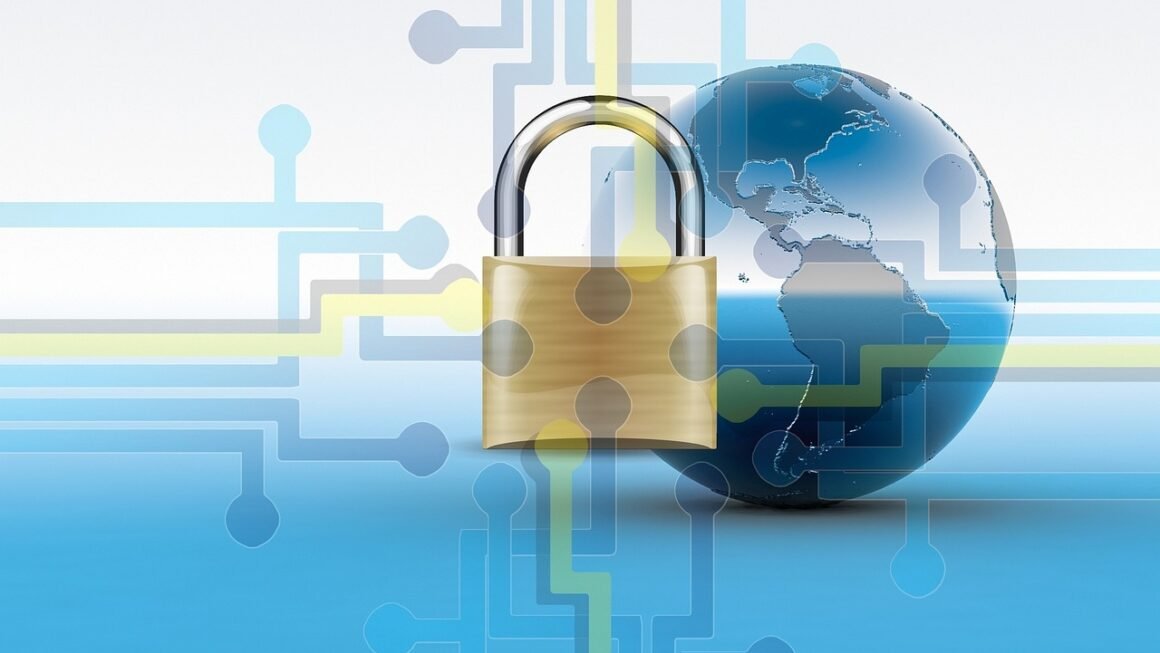Cybercrime. Just the word conjures images of shadowy figures hunched over glowing screens, siphoning away your hard-earned money or stealing your personal information. But the reality is often less dramatic, though no less devastating. From sophisticated ransomware attacks targeting multinational corporations to phishing emails designed to trick individuals, cybercrime is a pervasive and evolving threat that demands our constant vigilance. This post will break down the various facets of cybercrime, providing you with the knowledge and tools you need to protect yourself and your organization.
Understanding Cybercrime: A Broad Overview
Cybercrime, also known as computer crime, encompasses any criminal activity that involves a computer, a networked device, or a network. It’s a broad category covering a vast range of offenses, from simple hacking to complex international scams. Understanding the scope of cybercrime is the first step in defending against it.
Defining Cybercrime and its Scope
Cybercrime isn’t just one thing. It’s an umbrella term for a multitude of illegal activities that leverage technology. It can involve:
- The computer as a target: This includes hacking into a system, spreading viruses, or launching denial-of-service attacks.
- The computer as a tool: This includes using computers to commit fraud, steal identities, or distribute illegal content.
- Cyber-enabled crime: Traditional crimes that are amplified by technology, such as online stalking, bullying, or fraud.
The scope is truly global. A cybercriminal in Russia can target a small business in the United States, or a teenager in Canada can launch a DDoS attack against a website in Australia. The internet removes geographical barriers, making international cooperation in combating cybercrime crucial.
Common Types of Cybercrime
Understanding the various types of cybercrime is vital for recognizing and preventing them. Here are some of the most prevalent:
- Phishing: Deceptive emails or websites designed to trick individuals into revealing sensitive information like passwords, credit card numbers, or bank account details.
Example: An email disguised as a notification from your bank asking you to verify your account details by clicking a link.
- Malware: Malicious software designed to disrupt, damage, or gain unauthorized access to a computer system. This includes viruses, worms, Trojans, ransomware, and spyware.
Example: Ransomware encrypts your files and demands a ransom payment for the decryption key.
- Ransomware: A specific type of malware that encrypts a victim’s files or systems, rendering them unusable until a ransom is paid.
Example: The WannaCry ransomware attack in 2017 affected hundreds of thousands of computers worldwide.
- Identity Theft: Stealing someone’s personal information, such as their Social Security number, date of birth, or credit card details, to commit fraud or other crimes.
Example: Using stolen credit card information to make unauthorized purchases.
- Fraud: Deceiving individuals or organizations for financial gain, often through online scams, investment schemes, or credit card fraud.
Example: A “Nigerian prince” scam promising a large sum of money in exchange for a small upfront payment.
- Denial-of-Service (DoS) and Distributed Denial-of-Service (DDoS) Attacks: Overwhelming a website or network with traffic, making it unavailable to legitimate users.
Example: A DDoS attack can cripple an e-commerce website during a critical sales period.
- Cyber Espionage: Stealing confidential information from businesses or governments for competitive advantage or national security purposes.
Example: Hacking into a competitor’s network to steal trade secrets.
- Cryptojacking: Secretly using someone else’s computer to mine cryptocurrency without their knowledge or consent.
Example: Malware installed on a website mines cryptocurrency using the visitor’s CPU.
The Impact of Cybercrime
Cybercrime’s impact extends far beyond individual victims. It affects businesses, governments, and society as a whole, resulting in significant financial losses, reputational damage, and disruption of essential services.
Financial Losses and Economic Impact
The financial losses associated with cybercrime are staggering. According to a report by Cybersecurity Ventures, cybercrime is projected to cost the world $10.5 trillion annually by 2025. This includes:
- Direct costs: Ransom payments, fraud losses, data breach remediation costs.
- Indirect costs: Lost productivity, legal fees, reputational damage, decreased customer confidence.
- Example: A small business hit with ransomware may have to shut down temporarily, losing revenue and potentially damaging its reputation.
The economic impact extends beyond direct losses. Cybercrime can stifle innovation, discourage investment, and undermine trust in online commerce.
Reputational Damage and Loss of Trust
A data breach or cyberattack can severely damage an organization’s reputation. Customers may lose trust, leading to decreased sales and customer churn.
- Example: A healthcare provider that experiences a data breach compromising patient data may lose patients and face regulatory fines.
- Mitigation: Implementing strong security measures and being transparent about security incidents can help mitigate reputational damage.
Disruption of Essential Services
Cyberattacks can disrupt essential services such as healthcare, transportation, and energy. This can have serious consequences for public safety and national security.
- Example: A ransomware attack on a hospital can disrupt patient care and even endanger lives.
- Example: Attacks on critical infrastructure such as power grids can cause widespread blackouts.
Protecting Yourself and Your Business
While the threat of cybercrime is significant, there are many steps you can take to protect yourself and your business. Proactive security measures and employee awareness training are essential.
Strengthening Your Digital Defenses
Implementing robust security measures is crucial for preventing cyberattacks. These measures include:
- Strong Passwords: Use strong, unique passwords for all your online accounts. Use a password manager to generate and store your passwords securely.
- Two-Factor Authentication (2FA): Enable 2FA whenever possible. This adds an extra layer of security, requiring a second verification factor (such as a code sent to your phone) in addition to your password.
- Regular Software Updates: Keep your operating system, software, and applications up to date. Software updates often include security patches that fix vulnerabilities that cybercriminals can exploit.
- Firewall Protection: Use a firewall to block unauthorized access to your network.
- Antivirus Software: Install and maintain antivirus software to detect and remove malware.
- Regular Backups: Back up your data regularly to an external drive or cloud storage service. This will allow you to restore your data in the event of a ransomware attack or other data loss incident.
- Secure Wi-Fi Networks: Use strong passwords for your Wi-Fi network and avoid using public Wi-Fi networks for sensitive transactions. Use a VPN to encrypt your internet traffic when using public Wi-Fi.
Employee Awareness Training
Employees are often the weakest link in an organization’s security chain. Training them to recognize and avoid cyber threats is essential.
- Phishing Awareness Training: Teach employees how to identify phishing emails and avoid clicking on malicious links or attachments.
Tip: Conduct simulated phishing attacks to test employee awareness and identify areas for improvement.
- Password Security Best Practices: Educate employees on the importance of strong passwords and the dangers of reusing passwords.
- Social Engineering Awareness: Teach employees how to recognize and avoid social engineering attacks, which involve manipulating individuals into divulging confidential information.
- Data Security Policies: Implement and enforce clear data security policies, including guidelines for handling sensitive information, using company devices, and reporting security incidents.
Example: A policy requiring employees to lock their computers when they leave their desks.
Incident Response Planning
Even with the best security measures in place, a cyberattack can still occur. Having an incident response plan in place will help you minimize the damage and recover quickly.
- Identify Key Roles and Responsibilities: Clearly define the roles and responsibilities of individuals involved in incident response.
- Develop Procedures for Detecting and Responding to Incidents: Establish procedures for detecting security incidents, containing the damage, eradicating the threat, and recovering systems and data.
- Test Your Incident Response Plan: Regularly test your incident response plan through simulations and drills to ensure that it is effective.
- Communicate Effectively: Establish clear communication channels for reporting incidents and keeping stakeholders informed.
- Document Everything: Document all aspects of the incident, including the cause, the impact, and the actions taken to respond to it.
* Example: If ransomware is detected, isolate the infected system from the network immediately.
Emerging Cyber Threats and Future Trends
The cybercrime landscape is constantly evolving. New threats and attack techniques are emerging all the time. Staying informed about these trends is crucial for maintaining a strong security posture.
Artificial Intelligence (AI) and Cybercrime
AI is being used by both cybercriminals and security professionals. Cybercriminals are using AI to:
- Automate attacks: AI can be used to automate phishing attacks, malware distribution, and other cybercriminal activities.
- Develop more sophisticated malware: AI can be used to create malware that is more difficult to detect and remove.
- Evade detection: AI can be used to analyze security systems and identify vulnerabilities that can be exploited.
- Example: Deepfake technology can be used to create realistic fake videos or audio recordings for social engineering attacks.
Security professionals are using AI to:
- Detect and respond to threats: AI can be used to analyze network traffic and identify suspicious activity.
- Automate security tasks: AI can be used to automate tasks such as vulnerability scanning, patch management, and incident response.
- Improve threat intelligence: AI can be used to analyze large datasets of security information and identify emerging threats.
The Internet of Things (IoT) Security Risks
The proliferation of IoT devices has created new security risks. Many IoT devices have weak security measures, making them vulnerable to hacking.
- Example: A smart refrigerator with a weak password can be hacked and used to launch a DDoS attack.
- Mitigation: Change the default passwords on all your IoT devices, keep the firmware updated, and use a separate network for your IoT devices.
Cloud Security Challenges
Cloud computing offers many benefits, but it also introduces new security challenges. Organizations need to ensure that their data and applications are properly secured in the cloud.
- Misconfigured cloud services: Misconfigured cloud services can expose sensitive data to the public internet.
- Data breaches: Data breaches in the cloud can be caused by weak security measures, insider threats, or external attacks.
- Compliance challenges: Organizations need to comply with various regulations when storing data in the cloud.
- Mitigation: Implement strong security measures in the cloud, use encryption to protect sensitive data, and regularly audit your cloud security configuration.
Conclusion
Cybercrime is a serious and evolving threat that affects individuals, businesses, and governments worldwide. By understanding the different types of cybercrime, the impact they can have, and the steps you can take to protect yourself, you can significantly reduce your risk. Staying informed about emerging threats and future trends is also crucial for maintaining a strong security posture. Remember that cybersecurity is not a one-time fix; it’s an ongoing process of assessment, implementation, and adaptation. Be vigilant, stay informed, and prioritize your digital security.



